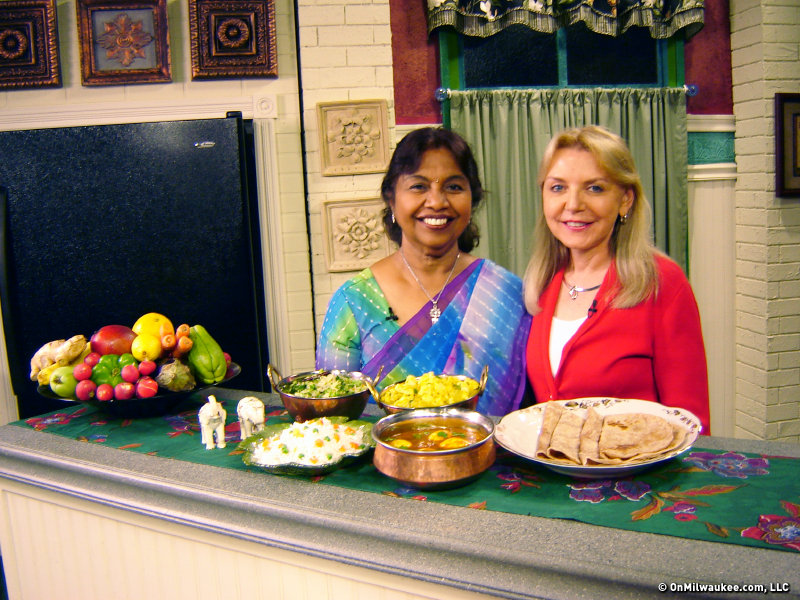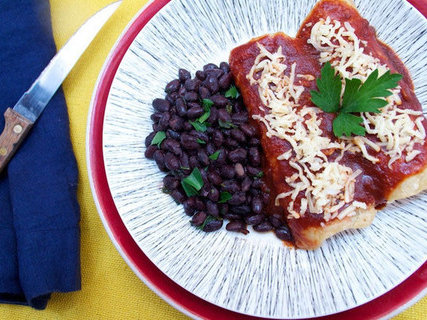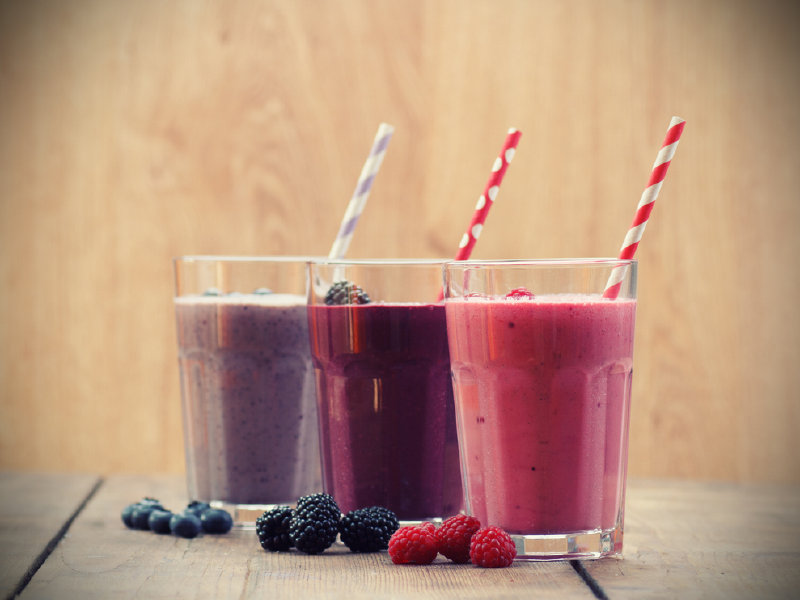Welcome to Healthy Living Week at OnMilwaukee.com! The resolutions are made, now the real work begins. But we're here to help get you – and keep you – on track with stories about medicine, diet, exercise, spiritual and emotional health, and more. Healthy Living Week is brought to you Pairrd: easy gluten-free cooking at your fingertips.
If you look at the statistics, you’ll find that about one in every 133 Americans suffers from celiac disease, an inflammatory condition in which the body cannot process gluten; another six percent suffer from gluten sensitivity.
However, despite the minority of consumers living with celiac disease, market research estimates that up to 15 percent of North American households are avoiding gluten (found in wheat, barley and rye). Sales in gluten-free categories have doubled in the last 5 years and are expected to double again in the next 3 years to $5.5 billion by 2015.
So, gluten-free eating isn’t something that’s going away anytime soon. Many restaurants here in Milwaukee cater to gluten-free diners. Tess has been serving gluten-free options for 10 years or more, including delicious house-baked breads. Stack’d Burger Bar offers gluten-free buns and keeps a dedicated gluten-free fryer. Pizzeria Piccola, Transfer and Via are among pizza places that offer house made gluten-free crust. Mia Famiglia in Hales Corners has a certified gluten-free kitchen, where they produce pasta, bread and other Italian specialities.
High-end restaurants like Sanford have knowledgeable staff who are happy to assist diners with special dietary needs. And spots like INdustri Café, Wolf Peach and BelAir Cantina, among others, clearly mark gluten-free items on their menu.
Gluten-free patrons can still find it intimidating to eat out in restaurants. And ethnic restaurants can present a particularly challenging prospect, since they can harbor myriad sources of "hidden gluten."
"I think you'll find that those of us who are highly sensitive or celiac tend to cook at home as much as possible," says Rachel Wilberding, celiac and healthy food advocate. "Even though any ethnic cuisines are naturally less gluten-dependent, the language barriers that often exist in those establishments make them risky for the highly sensitive."
Ylonda D. Glover agrees. She was diagnosed with a gluten intolerance in 2010 and says it changed everything about the way that she eats.
"I do cook at home more often now than I did in the past," she admits. "From my experience, ethnic foods are definitely not gluten-free friendly. Indian, Jamaican, soul food and Asian foods use a lot of flour fillers and soy fillers to thicken and season foods, and this was my number one problem with eating ethnic foods."
Glover says that it’s more work for her to dine out at restaurants since it takes a bit of research.
"I usually go online to the restaurants website before I dine and ask a lot of questions before I order my food," she says.
Nicole Adrian, a Milwaukee-area public relations account executive who is moderately sensitive to gluten, says that she regularly runs into trouble when she eats at ethnic restaurants.
"I often take more risks than I should and don't ask enough questions," she says. "I think I get intimidated by the language barrier. For instance, in Indian restaurants, I've tried sticking to dosas, which I think are made with chickpea flour, but I inevitably sample other dishes and end up not feeling well."
Kate Venne, who also works in public relations, says the language barrier also presented a problem for her, especially when she first started eating gluten-free.
"That was my biggest fear when I first learned I had celiac, was navigating the language barrier at ethnic restaurants. But Milwaukee is great for having good restaurants and owners who really want to try," she says.
Venne eats fairly regularly at Shah Jee, has managed to navigate the Maharaja buffet (she sticks with the chicken masala), and applauds the helpful personnel at Thainamite and King and I for assisting in navigating an otherwise potentially hazardous menu. But, she says the challenge of celiac is greatly reduced by her ability (and love) for cooking at home.
Anna Baker, a nurse in the Milwaukee area, says she almost always opts for cooking at home.
"I have a gluten sensitivity, so it’s not as much of a threat to my health," she tells me. "But I'm very sensitive to gluten. I go through phases of cooking versus eating out. But, if I don't cook, it’s because I'm tired or desiring a meal beyond my culinary ability."
Fortunately, cookbook authors like Milwaukee’s own Alamelu Vairavan, author of five cookbooks and host of "Healthful Indian Flavors with Alamelu" on PBS, have heard the pleas of gluten-free diners who want to experience fresh, flavorful ethnic food without the fear of ingesting gluten.
When she first began working on her first gluten-free cookbook, Vairavan says she knew very little about the topic, but she knew there was a demand for gluten-free versions of her recipes. So, she teamed up with registered dietician Margaret Pfeiffer to compile "Indian Inspired Gluten-Free Cooking," a volume of over 100 recipes presenting fresh delicious dishes that are beautiful, healthful and free of gluten.
Whereas the majority of gluten-free cookbooks focus on breads and desserts – items most often missed by gluten-free diners – Vairavan’s introduces the richly aromatic, healthy and easy-to-make classics of Indian cuisine.
"I love going out. I feel good sitting around with friends and talking," Vairavan says. "But, in Indian restaurants, they are generally not catering to the gluten-free public. So, one of the best things to do is take your health into your own hands and cook at home. There isn’t anything like home cooked food. You’re using locally available fresh foods and spices that have intrinsic health qualities."
One of the things Vairavan found, as she and Pfeiffer were researching the book, is that although the cuisine of Southern India lends itself easily to gluten-free cooking, many of the convenient Indian spice blends on the market often contain gluten, or are produced in facilities that also handle gluten.
So, one of her main challenges in creating her gluten-free recipes was to evoke the aromatic flavors of India without making the recipes too unwieldy for the home cook.
"I like to cook, but I don't like to spend all day in my kitchen," she tells me, "So, all the recipes are easy to prepare and the spices and ingredients I use are easy to find … already ground spices. I don’t like people fussing around. It’s too much."
She encourages readers to save time by doing the majority of their cooking on weekends and reheating the food during the week. She also encourages them to branch out and try new vegetables they may have never eaten before.
"I really had the passion to teach and tell people how to make things like Brussels sprouts and broccoli,’" she says. "When I teach classes and talk about lima beans, people always come up to me and say ‘Gee, gosh, I don’t like it.’ But, I took it as a challenge."
So, she created a recipe for the cookbook which she calls "Heavenly Lima Beans." It uses ingredients like tomatoes, garlic and ginger to elevate the humble bean into a dish that she says people now regularly request.
According to Vairavan, cooking is an essential skill for health. And she encourages everyone to give the enjoyment of cooking a chance.
"Go into your kitchen, light a candle and put the ingredients together," she says. "It can be beautiful."
Lori is an avid cook whose accrual of condiments and spices is rivaled only by her cookbook collection. Her passion for the culinary industry was birthed while balancing A&W root beer mugs as a teenage carhop, fed by insatiable curiosity and fueled by the people whose stories entwine with each and every dish. She’s had the privilege of chronicling these tales via numerous media, including OnMilwaukee and in her book “Milwaukee Food.” Her work has garnered journalism awards from entities including the Milwaukee Press Club.
When she’s not eating, photographing food, writing or recording the FoodCrush podcast, you’ll find Lori seeking out adventures with her husband Paul, traveling, cooking, reading, learning, snuggling with her cats and looking for ways to make a difference.







